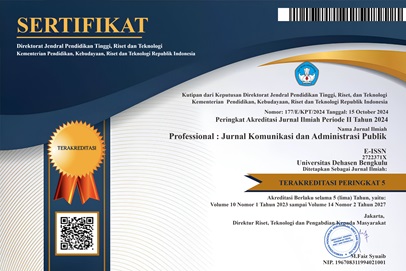Human-Machine Communication dalam Interaksi Penggunaan AI
Abstract
The rapid development of artificial intelligence technology that is starting to be utilized in the world of education has the potential to change how students and technology learn and communicate. One of the shifts in the use of artificial technology in education is the widespread use of Chat GPT. This study aims to determine the interaction of students in the city of Semarang in using AI technology, especially Chat GPT, in lecture activities through the Human-Machine Communication (HMC) Theory and the Phenomenology approach. The research method used is qualitative, which involves conducting interviews, observations, and documentation. The results of the study showed that most students considered Chat GPT an effective tool to support the learning process, especially in helping to understand the material and speeding up the search for information. However, some students also expressed concerns about the potential for dependence and negative impacts such as plagiarism. HMC emphasizes the importance of effective communication between humans and machines, where students must master how to give the right commands or prompts so that Chat GPT can provide information relevant to academic needs. The presence of Chat GPT creates dynamic interactions between students and AI. AI technology can help students who have difficulty completing college assignments. However, on the other hand, students must continue to hone their critical thinking skills and utilize AI wisely by making this GPT Chat technology a supporter, not a substitute for the human thinking process.
Downloads
Copyright (c) 2025 Fandhi Tricahyo, Rahmawati Zulfiningrum

This work is licensed under a Creative Commons Attribution-ShareAlike 4.0 International License.





